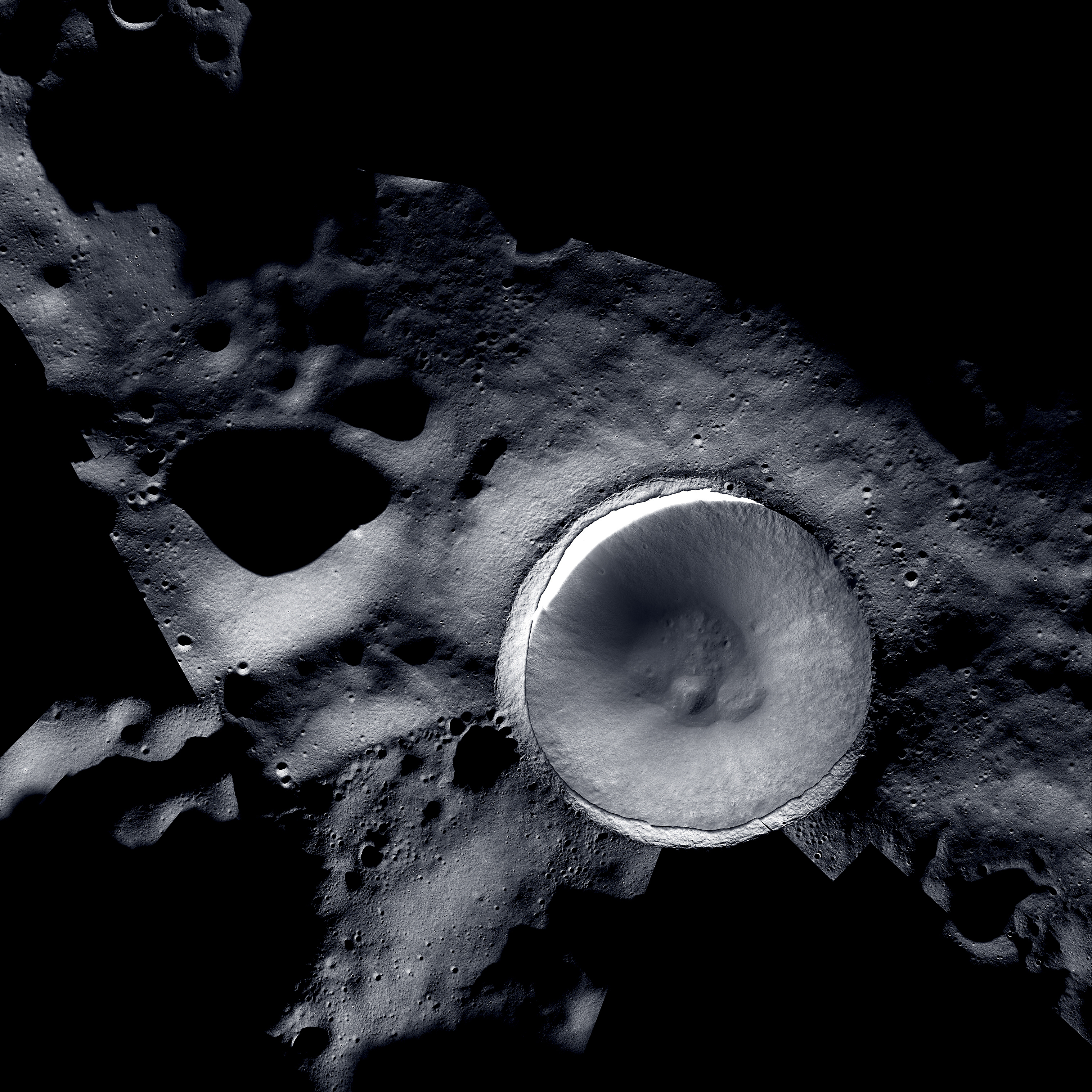On the South Pole of the Moon, there are craters that never see sunlight. Images of them are usually just a dark abyss, but there is interest in getting to the bottom of them. There is ice there, and the Artemis astronauts will explore the region when humans return to the Moon later this decade. But NASA has a camera in space that can finally see inside the craters and the results are very pretty!
The newly released mosaic targets Shackleton Crater. It mixes observations from the camera on the Lunar Reconnaissance Orbiter (LROC) and ShadowCam. ShadowCam is 200 times more light-sensitive than LROC, so it can reveal features that would be too dark for other cameras to see.
Obviously, a camera needs a light source to work and there are two that provide enough indirect light to illuminate the crater. Sunlight at those high latitudes comes in too obliquely to get in the crater but it hits the rim and nearby mountains, and that diffuse reflected light can reach the permanently shadowed areas. The other source is our own planet.
Just like the Moon reflects the light of the Sun towards Earth, Earth reflects sunlight towards the Moon. It is known as Earthshine. The effect is visible to the naked eye. When the Moon is in a crescent, you can sort of see the rest of its face due to Earthshine. ShadowCam even took some observations of equatorial regions of the Moon during the lunar night.

Full view of the new image showing some of the regions that never get sunlight.
Image Credit: Mosaic created by LROC (Lunar Reconnaissance Orbiter) and ShadowCam teams with images provided by NASA/KARI/ASU
Those are usually a no-go-zone for the instrument as direct sunlight is too bright and leads to saturated images. It is easy to see where ShadowCam’s work ends and LROC’s begins, due to this saturation. The crater’s sunlit rim is washed out in the ShadowCam contribution. And you can track how the light is then reflected on the deeper structure of the crater.
ShadowCam is not its own mission but an instrument on KARI (Korea Aerospace Research Institute)’s Danuri, the country’s pathfinder lunar orbiter. The name is a portmanteau of two Korean words, dal (달) which means moon and nurida (누리다) which means to enjoy.
Danuri’s mission is to create a new topographic map of the Moon as well as surveying lunar resources such as water, helium-3, silicon, uranium, and aluminum. It was also used to test a prototype of a space internet, with communication nodes spread through space.
Source Link: See What’s Inside One Of The Permanently Dark Craters On The Moon